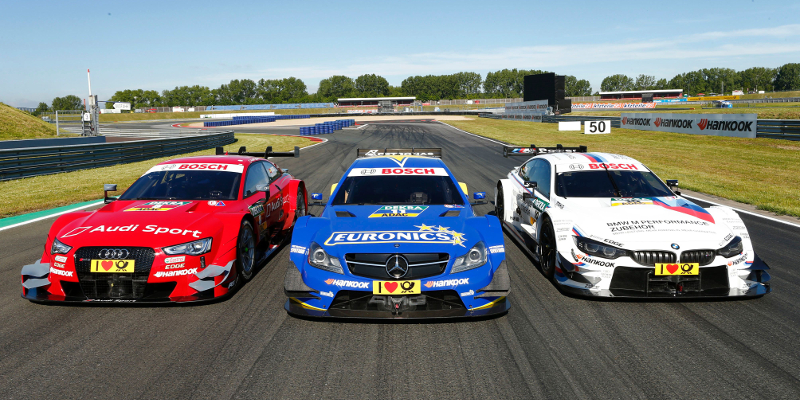Officials from the Deutsche Tourenwagen Masters and Japanese Super-GT series’ have today (Tuesday 30 September) announced plans for a new set of ‘Class One’ regulations that will be adopted from the beginning of the 2017 seasons.
The meeting between the so-called ‘steering committee’ was held in Tokyo – where an initial cooperation agreement between the DTM and Super-GT was signed in 2012 – and also included officials from the American motor-racing association, IMSA, who stated their intent to announce races according to the new regulations.
While DTM and Super-GT cars currently use identical chassis and aerodynamic regulations, the plans provide a platform for the further unification of the series’, as well as the opportunity for worldwide adoption of the Class One rules.
The names and specific characteristics of the series’ will remain the same but the regulations, agreed by representatives of the three present organisations, will see the following principles adopted:
– ‘spectacular cars’, with ‘silhouette’ designs similar to those currently in use in the DTM and Super-GT
– high levels of safety
– a cut back in operational and developmental costs
– turbocharged, four cylinder two-litre engines, capable of outputting 600bhp
Additionally, testing limitations, tyre specifications and the use of DRS (Drag Reduction System) were also addressed at the meeting.
Hans Werner Aufrecht, Chairman of the DTM’s governing body ITR, stated that the agreement was an ‘important milestone’ for the series’ as well as the manufacturers competing in them.
“The agreement between the leading car manufacturers in Germany and Japan is an important milestone on the way to a set of joint, globally implemented Class One regulations,” said Aufrecht. “It’s up to the manufacturers’ to decide if they want to let their Class-1 vehicle race at Suzuka today, at the Nürburgring next week and at Daytona in a fortnight. This possibility provides totally new marketing opportunities for the manufacturers. And the joint name, ‘Class One’, is an important component, so to speak the cramp that is holding it all together.
“I’m delighted that we are going to demonstrate our common ground, in Europe, Japan and the USA, with this distinctive name. All these moves will help us achieving a variety of brands never witnessed before at the highest technical level and consequently, we will provide the crowds even more fascinating motor sport. Isn’t it a fantastic perspective that spectacular racing cars such as the DTM vehicles can be run all over the world at reasonable costs, in the future?”
Masaaki Bandoh, chairman of the Japanese GTA, was similarly pleased with the outcome of the meeting, and the opportunities it presented to car manufacturers.
“The meeting was very productive,” added Bandoh. “We fully agreed on the concept of the common technical regulation. This agreement will create better conditions for car manufactures to participate in the other series in future.”

